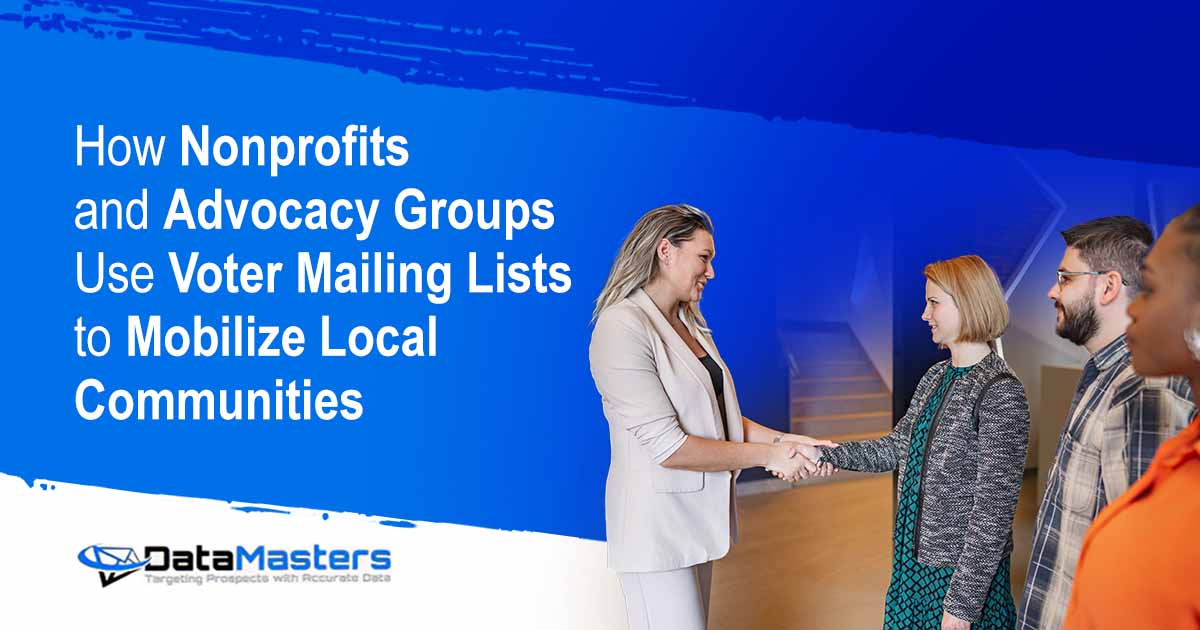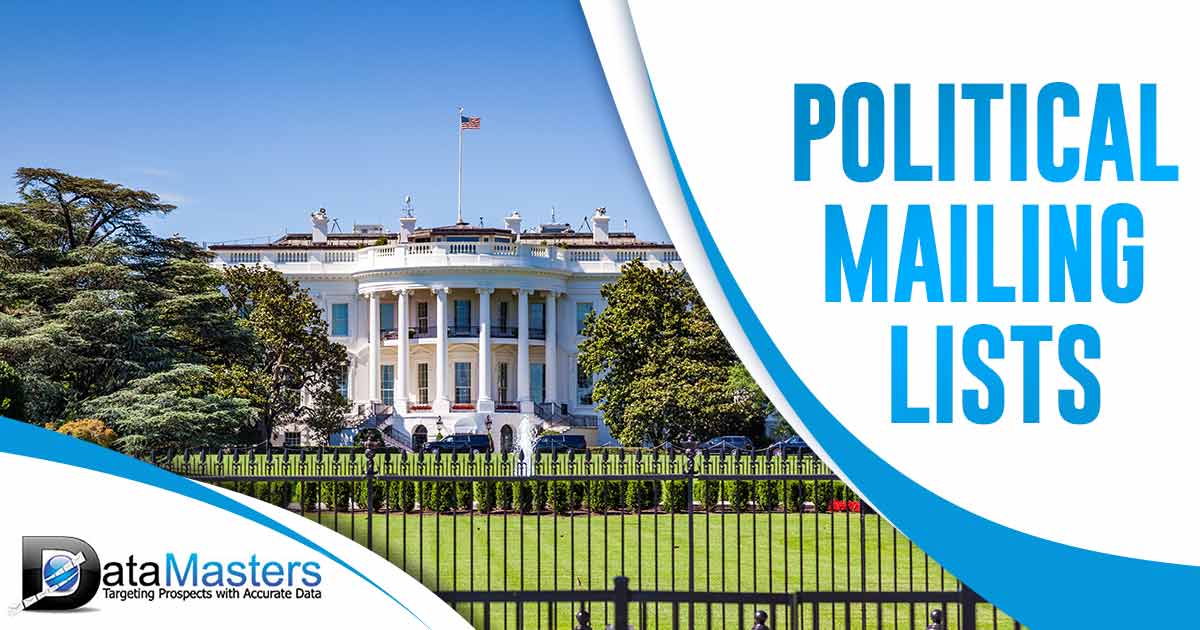Nonprofits and advocacy organizations often face the challenge of reaching the right people with limited resources. Voter mailing lists provide a reliable way to connect with individuals based on political affiliation, geographic district, or issue interest. While political campaigns have long used these lists for election purposes, nonprofits and 501(c)(4) groups are leveraging them to raise awareness, educate voters, and build local engagement. By using voter data responsibly, organizations can expand their outreach while staying compliant with campaign regulations.
What Are Voter Mailing Lists and Why They Matter
Voter mailing lists are databases that contain names, addresses, and demographic details of registered voters. These lists are not limited to political campaigns. Nonprofits and advocacy groups use voter mailing lists to identify supporters, engage communities, and communicate about local issues.
Unlike general consumer mailing lists, voter database mailing lists allow organizations to target individuals more precisely. Nonprofits may segment lists by voting district, party affiliation, or policy interests to ensure their messages reach the most relevant audience. This level of targeting helps groups maximize their outreach efforts without wasting resources.
Compliance is also an important factor. While political campaigns must follow strict regulations, nonprofits and 501(c)(4) organizations can use voter mailing lists for educational and advocacy purposes as long as they avoid direct electioneering. By understanding these guidelines, organizations can effectively use voter data while staying within legal boundaries.
How Nonprofits Use Voter Mailing Lists to Engage Communities
Voter mailing lists give nonprofits the ability to reach individuals who are most likely to engage with their mission. Instead of sending broad, unfocused messages, organizations can focus on targeted outreach that aligns with voter interests and community needs. This approach allows nonprofits to educate, fundraise, and recruit more effectively.
Educating Voters on Local Issues
Nonprofits often use voter mailing lists to provide nonpartisan information on ballot initiatives, local policies, or community concerns. By segmenting lists by district or geographic area, organizations can send relevant updates to the voters most directly impacted. This ensures communities stay informed and encourages participation in local and off-cycle elections.
Fundraising Campaigns and Donor Outreach
Targeted fundraising becomes more effective when nonprofits use voter mailing lists. By identifying voters who have shown interest in specific causes, organizations can tailor appeals that connect with their values. Direct mail campaigns may focus on one-time donations, while segmented lists can help build recurring donor bases from individuals who consistently support issue-driven work.
Driving Membership and Volunteer Growth
Voter mailing lists also support membership recruitment and volunteer mobilization. Nonprofits can identify likely supporters within a district and invite them to join campaigns, attend events, or contribute time to advocacy initiatives. This targeted outreach strengthens community involvement and increases the pool of active participants who support long-term goals.
How Advocacy Groups Leverage Voter Mailing Lists for Impact
Advocacy organizations rely on voter mailing lists to reach audiences with specific interests and values. These lists help groups communicate more effectively by focusing on alignment with issues rather than general messaging. By segmenting voters by affiliation, location, or cause, advocacy groups can increase engagement and drive meaningful action.
Reaching Audiences by Political Affiliation
Voter mailing lists allow advocacy groups to identify individuals by political party alignment. While advocacy groups must avoid electioneering, they can use this information to frame messages in a way that resonates with different audiences. For example, an organization focused on healthcare reform may tailor its outreach differently for voters identified as conservative, moderate, or progressive.
Targeting Specific Districts and Communities
Geographic targeting is one of the most effective uses of voter mailing lists. Advocacy groups can deliver messages to specific neighborhoods, school districts, or legislative areas where policy issues are most relevant. This hyper-local approach ensures that outreach is timely, impactful, and directly tied to the community’s concerns.
Engaging Voters Based on Interests and Values
Many voter databases include data points that go beyond party affiliation. Advocacy groups can use voter mailing lists to connect with individuals who have expressed interest in issues such as education, environmental protection, or public health. By tailoring campaigns to these interests, organizations create stronger connections and inspire voters to take action in support of their causes.
Benefits of Voter Mailing Lists for Local Mobilization
Voter mailing lists give nonprofits and advocacy groups a practical way to strengthen community engagement. By focusing on targeted audiences instead of broad outreach, organizations save time and resources while achieving higher impact.
- Cost-Effective Outreach
Direct mail campaigns built from voter mailing lists are more efficient than mass advertising. Instead of reaching uninterested households, nonprofits and advocacy groups focus only on individuals who are likely to respond. - Higher Engagement and Response Rates
Because voter mailing lists allow for segmentation by political affiliation, district, or issue interest, the messages feel more relevant to recipients. This relevance increases open rates, response rates, and long-term participation. - Building Long-Term Relationships
Targeted outreach is not only about immediate results. Nonprofits and advocacy organizations use voter mailing lists to maintain relationships with supporters over time. Regular communication builds trust, loyalty, and a stronger base for future campaigns.
Best Practices for Nonprofits and Advocacy Groups Using Voter Mailing Lists
To maximize the value of voter mailing lists, nonprofits and advocacy groups should focus on strategy, compliance, and integration with other outreach efforts. Following best practices ensures campaigns remain effective and within legal boundaries.
Staying Compliant with Campaign Regulations
Nonprofits and 501(c)(4) organizations must use voter mailing lists responsibly. While they can educate communities and promote issues, they cannot endorse or oppose specific candidates. Understanding the differences between electioneering and advocacy is essential to avoid IRS or FEC violations. Clear messaging that focuses on issues rather than candidates keeps campaigns compliant.
Integrating Voter Mailing Lists with Digital Campaigns
Direct mail is effective, but results improve when voter mailing lists are combined with digital strategies. Many organizations integrate their mailing lists with email, social media, and text campaigns. This multi-channel approach reinforces messaging and provides multiple touchpoints to reach supporters. Coordinated efforts increase visibility and strengthen advocacy impact.
Measuring Campaign Success
Successful use of voter mailing lists requires ongoing measurement. Nonprofits and advocacy groups track engagement, donations, and community participation to understand what resonates. Data analysis helps refine targeting, improve response rates, and ensure resources are being used efficiently. Adjusting strategies based on these insights leads to stronger long-term outcomes.
Ready to Mobilize Your Community with Voter Mailing Lists?
Partner with DataMasters for accurate, targeted voter mailing lists that help nonprofits and advocacy groups connect with local communities, raise awareness, and drive meaningful action. Call (469) 549-1800 or toll-free (800) 897-1183 to get started today.


